CAA News Today
Artifex Press Catalogues Raisonnés – Introductory Webinar Invitation
posted by admin — January 27, 2017
 Artifex Press, a publisher of digital catalogues raisonnés, is proud to launch their subscription service in February 2017. Currently available are catalogues raisonnes for Chuck Close, Jim Dine, and Tim Hawkinson; and in February 2017 they will release Agnes Martin and James Siena; later in 2017 they will publish Sol LeWitt and Lucas Samaras. Sign up for an introductory webinar about their platform, including a presentation by Tiffany Bell, Editor of their Agnes Martin Paintings catalogue and co-curator of the traveling 2015 – 2017 Agnes Martin Retrospective, which began at the Tate and just closed at the Solomon R. Guggenheim Museum.
Artifex Press, a publisher of digital catalogues raisonnés, is proud to launch their subscription service in February 2017. Currently available are catalogues raisonnes for Chuck Close, Jim Dine, and Tim Hawkinson; and in February 2017 they will release Agnes Martin and James Siena; later in 2017 they will publish Sol LeWitt and Lucas Samaras. Sign up for an introductory webinar about their platform, including a presentation by Tiffany Bell, Editor of their Agnes Martin Paintings catalogue and co-curator of the traveling 2015 – 2017 Agnes Martin Retrospective, which began at the Tate and just closed at the Solomon R. Guggenheim Museum.
Don’t forget to also visit their booth (#1111) at the 2017 CAA Conference!
New in caa.reviews
posted by admin — January 27, 2017
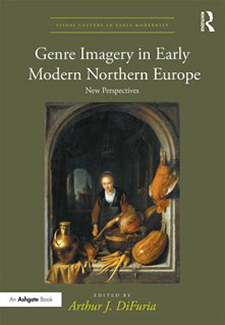 Wayne Franits reviews Genre Imagery in Early Modern Northern Europe: New Perspectives, edited by Arthur J. DiFuria. The eight essays “challenge” and “transcend” traditional studies on this topic “by exploring the complex, heterogeneous reception of such imagery among early modern viewers,” and they achieve this “noteworthy goal” with “varying degrees of success.” Read the full review at caa.reviews.
Wayne Franits reviews Genre Imagery in Early Modern Northern Europe: New Perspectives, edited by Arthur J. DiFuria. The eight essays “challenge” and “transcend” traditional studies on this topic “by exploring the complex, heterogeneous reception of such imagery among early modern viewers,” and they achieve this “noteworthy goal” with “varying degrees of success.” Read the full review at caa.reviews.
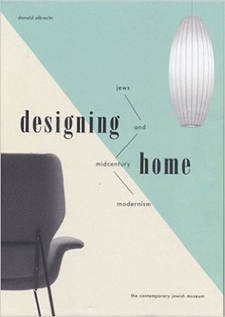 Deborah Lewittes discusses the exhibition catalogue for Designing Home: Jews and Midcentury Modernism, produced by the Contemporary Jewish Museum in San Francisco. Offering “a fresh take on the popular topic of twentieth-century domestic design,” the “elegant” and “graphically stunning” book is “a work of scholarly importance” and “provides interesting cultural tidbits.” Read the full review at caa.reviews.
Deborah Lewittes discusses the exhibition catalogue for Designing Home: Jews and Midcentury Modernism, produced by the Contemporary Jewish Museum in San Francisco. Offering “a fresh take on the popular topic of twentieth-century domestic design,” the “elegant” and “graphically stunning” book is “a work of scholarly importance” and “provides interesting cultural tidbits.” Read the full review at caa.reviews.
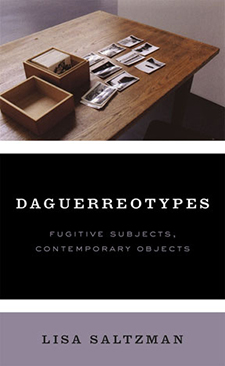 Astrid Köhler examines Daguerreotypes: Fugitive Subjects, Contemporary Objects by Lisa Saltzman. The volume “distinguishes itself from most other theories of photography, both in content and approach, via a lucid analysis” that “brings together heterogeneous objects that share a distinctive relation to time, identity, and memory.” Read the full review at caa.reviews.
Astrid Köhler examines Daguerreotypes: Fugitive Subjects, Contemporary Objects by Lisa Saltzman. The volume “distinguishes itself from most other theories of photography, both in content and approach, via a lucid analysis” that “brings together heterogeneous objects that share a distinctive relation to time, identity, and memory.” Read the full review at caa.reviews.
News from the Art and Academic Worlds
posted by Christopher Howard — January 25, 2017
Each week CAA News summarizes eight articles, published around the web, that CAA members may find interesting and useful in their professional and creative lives.
Does Private Funding Threaten Museums’ Public Missions?
With an incoming presidential cabinet threatening to slash public spending, placing additional strain on institutions, one might well ask: How will the next generation of museums be funded? What changes in museum funding models are already taking place, both in the US and elsewhere? (Read more from Artsy.)
Some Advice on Building Conference Panels
Some of the best panels I’ve created have been with very senior scholars. Even if you are a junior scholar, you can bet that if your panel is well assembled and you craft your approach email with kindness and respect, it’s very likely that invited senior scholars may say yes. (Read more from Raul Pacheco-Vega, PhD.)
Study on Arts Graduates Provides Continuing Evidence on the Value of an Arts Degree
A recent study provides new evidence that individuals with degrees in the arts from North American institutions are extremely satisfied with their arts education, with no substantive changes across income levels and employment status. The report analyzes data from more than 35,000 arts alumni of all ages who responded to a fall 2015 survey. (Read more from the Strategic National Arts Alumni Project.)
Against the Design Thinking Meeting
The people who speak the language of design thinking are the cool kids. Not just the people with the awesome glasses and the black clothing. These are the people who have those awesome jobs with “innovation” or “disruption” on their business cards. (Read more from Inside Higher Ed.)
Artists Are Throwing Wrenches into the Art World’s Works
Even as one visible portion of the art world becomes ever more soaked in money, artists are picking up the ideas of first- and second-generation institutional critique and adapting them to the needs of the present. With increasing frequency, they are investigating, tweaking, and even striking out against the operation of museums, galleries, and the market as an integral part of their larger practices. (Read more from ARTnews.)
The Institution as User: Museums on Social Media
How does a museum talk? Its voice lives in wall texts, whether they deliver art history or gently admonish against touching work or using flash photography. Its tone has to be serious enough to honor the histories it was built to protect, and to convince visitors that the twenty dollars they paid to get in was well spent. (Read more from Art in America.)
Diversity in the Open-Access Movement, Part 1: Differing Definitions
Not only is there wide disagreement as to what “freely available” in open access really means, but not everyone in the movement even agrees that all scholarship must be freely available, or how quickly it should be made freely available, or what mechanisms are appropriate for making it that way. Since the fact of this ideological diversity doesn’t seem to be self-evident, it might be helpful to lay out some evidence for it here. (Read more from the Scholarly Kitchen.)
Strengthening Networks, Sparking Change: Museums and Libraries as Community Catalysts
A new report from the Institute of Museum and Library Services includes case studies and a discussion of conceptual frameworks that can guide libraries, archives, and museums that seek to spark catalytic change in their communities. (Read more from the Institute of Museum and Library Services.)
Art Journal Editorial Board Seeks New Member
posted by admin — January 24, 2017
CAA invites nominations and self-nominations for one individual to serve on the Art Journal Editorial Board for a four-year term: July 1, 2017–June 30, 2021. Candidates may be artists, art historians, art critics, art educators, curators, or other art professionals; institutional affiliation is not required. Art Journal, published quarterly by CAA, is devoted to twentieth- and twenty-first-century art and visual culture.
The editorial board advises the Art Journal editor-in-chief and assists her or him in seeking authors, articles, artists’ projects, and other content for the journal; performs peer review and recommends peer reviewers; guides its editorial program and may propose new initiatives for it; and may support fundraising efforts on the journal’s behalf. Members also assist the editor-in-chief to keep abreast of trends and issues in the field by attending and reporting on sessions at the CAA Annual Conference and other academic conferences, symposia, and other events in their fields.
The Art Journal Editorial Board meets three times a year, with meetings in the spring and fall plus one at the CAA Annual Conference in February. The spring and fall meetings are currently held by teleconference, but at a later date CAA may reimburse members for travel and lodging expenses for New York meetings in accordance with its travel policy. Members pay travel and lodging expenses to attend the conference in February. Members of all editorial boards volunteer their services to CAA without compensation.
Candidates must be current CAA members in good standing and should not be serving on the editorial board of a competitive journal or on another CAA editorial board or committee. Members may not publish their own work in the journal during the term of service. CAA encourages applications from colleagues who will contribute to the diversity of perspectives on the Art Journal Editorial Board and who will engage actively with conversations about the discipline’s engagements with differences of culture, religion, nationality, race, gender, sexuality, and access. Nominators should ascertain their nominee’s willingness to serve before submitting a name; self-nominations are also welcome. Please send a letter describing your interest in and qualifications for appointment, a CV, and your contact information to: Chair, Art Journal Editorial Board, College Art Association, 50 Broadway, 21st Floor, New York, NY 10004; or email the documents or inquiries to Joe Hannan, CAA editorial director. Deadline: April 17, 2017.
Art Journal Seeks Editor-in-Chief
posted by admin — January 24, 2017
The Art Journal Editorial Board invites nominations and self-nominations for the position of editor-in-chief for the term July 1, 2018–June 30, 2021 (with service on the Art Journal Editorial Board in 2017–18 as editor designate, and in 2021–22 as past editor). Art Journal, published quarterly by CAA, is devoted to twentieth- and twenty-first-century art and visual culture.
Working with the editorial board, the editor-in-chief is responsible for the content and character of the journal. He or she solicits content, reads all submitted manuscripts, sends submissions to peer reviewers, and provides guidance to authors concerning the form and content of submissions; develops projects; makes final decisions regarding content; and may support fundraising efforts on the journal’s behalf. A candidate may be an artist, art historian, art critic, art educator, curator, or other art professional. The editor-in-chief works closely with CAA’s New York staff.
The editor-in-chief attends the three meetings each year of the Art Journal Editorial Board— held in the spring and fall by teleconference or in New York, and in February at the CAA Annual Conference—and submits an annual report to CAA’s Board of Directors. CAA may reimburse the editor for travel and lodging expenses for spring and fall New York meetings in accordance with its travel policy, but the editor pays his or her own expenses for the Annual Conference.
The position usually requires one-half of an editor’s working time. CAA provides financial compensation for course release, usually to an editor’s employer.
Candidates must be current CAA members in good standing and should not be serving on the editorial board of a competitive journal or on another CAA editorial board or committee. CAA encourages applications from colleagues who will contribute to the diversity of perspectives on the Art Journal Editorial Board and who will engage actively with conversations about the discipline’s engagements with differences of culture, religion, nationality, race, gender, sexuality, and access. Nominators should ascertain their nominee’s willingness to serve before submitting a name; self-nominations are also welcome. A CV, a letter of interest from the nominee, and at least one letter of recommendation must accompany each nomination. Please mail to: Art Journal Editor-in-Chief Search, College Art Association, 50 Broadway, 21st Floor, New York, NY 10004; or email the documents or inquiries to Joe Hannan, CAA editorial director. Deadline: April 3, 2017. Finalists will be interviewed on the afternoon of May 4, in New York.
CAA Statement on Government Spending Cuts for Arts and Humanities
posted by Christopher Howard — January 23, 2017
For more than a century, the College Art Association (CAA) has represented art historians, artists, museum professionals, designers, and others who think and care about the visual arts and its impact on our culture. We do this in part through direct advocacy for artistic and academic freedom.
Like many other Americans, we have closely watched the proposed changes to the federal government. Recent news reports reveal that the US President intends to propose the elimination of funding for the National Endowment for the Arts (NEA) and the National Endowment for the Humanities (NEH). This proposal is reportedly based in part on a recommendation by the Heritage Foundation that states, “As the U.S. Congress struggles to balance the federal budget and end the decades-long spiral of deficit spending, few programs seem more worthy of outright elimination than the National Endowment for the Arts.”
We offer our complete and total opposition to these efforts.
Since the 1960s, the NEA and NEH have supported artists, writers, museum professionals, and a wide array of scholars of various disciplines in creating new work and scholarship. The NEA supports thousands of cultural and educational organizations, and, in a few cases, individual artists. The NEH, which strengthens teaching and learning in schools and colleges—as well as the work of independent scholars—creates access to educational scholarship and research nationwide. In addition, the NEH is a strong supporter of museum exhibitions throughout the country. Combined, the budgets for the two agencies are less than $300 million. The organizational grantees generate hundreds of millions of dollars in matching support and countless new works of art and scholarship. These works and related projects are studied and enjoyed by millions of Americans in museums and other venues. The cultural sector of the US economy generates more the $135 billion in revenue and employs over three million people in small towns and large cities countrywide.
Given that the respective budgets of the NEA and NEH represent only a tiny fraction of the entire federal budget, their planned elimination cannot logically be seen as a cost-saving measure. Rather, it appears to be a deliberate, ominous effort to silence artistic and academic voices, representing a potentially chilling next step in an apparent effort to stifle and eradicate oppositional voices and cultural output from civic life. By eliminating the support for these agencies, the government undermines the unifying potential of the arts, culture, and education that encourages and nurtures communication and positive discussion.
CAA leadership is monitoring the possible elimination and/or reduction of funding for the NEA and NEH and how it may affect our members and the work they do. CAA will communicate and collaborate with other cultural and educational organizations and learned societies to determine potential future advocacy options.
We urge our fellow CAA members to contact their representatives in Congress to let them know the importance of maintaining a robust, national, publicly supported framework for artistic and academic freedom. When you contact your representative, we ask that you let them know you are a member of CAA and together we are advocating for continued public funding for the arts. We also encourage you to contact the National Humanities Alliance and Americans for the Arts to become further involved.
Through our collective strength, we can ensure that public funding of scholarship and art making continues, free from political and commercial interference.
 Suzanne Preston Blier President |
Hunter O’Hanian Executive Director Chief Executive Officer |
2016 Recipients of CAA’s Professional Development Fellowships
posted by Christopher Howard — January 23, 2017
CAA has awarded two 2016 Professional-Development Fellowships—one in visual art and one in art history—to graduate students in MFA and PhD programs across the United States. In addition, CAA has named one honorable mention in art history and two in visual art. The fellows and honorable mentions also receive a complimentary one-year CAA membership and free registration for the 2017 Annual Conference in New York.
Accepting the $10,000 fellowship in visual art is Daniel Seth Krauss, an MFA student in photography in the Tyler School of Art at Temple University in Philadelphia, Pennsylvania. The recipient of the $10,000 fellowship in art history is Sara Blaylock, a doctoral candidate in visual studies at the University of California, Santa Cruz.
The honorable mention for art history goes to Lex Lancaster, a PhD student at the University of Wisconsin, Madison. The two honorable mentions in visual art are Allison Rose Craver, an MFA candidate at Ohio State University in Columbus, and Andrew Jilka, an MFA student at the School of Visual Arts in New York.
Suzanne Preston Blier, president of the CAA Board of Directors, will formally recognize the two fellows and three honorable mentions at the 105th Annual Conference during Convocation, taking place on Wednesday, February 15, 2017, at the New York Hilton Midtown.
CAA’s fellowship program supports promising artists and art historians who are enrolled in MFA and PhD programs nationwide. Awards are intended to help them with various aspects of their work, whether for job-search expenses or purchasing materials for the studio. CAA believes a grant of this kind, without contingencies, can best facilitate the transition between graduate studies and professional careers. The program is open to all eligible graduate students in the visual arts and art history. Applications for the 2017 fellowship cycle will open in the late spring.
FELLOW IN VISUAL ART
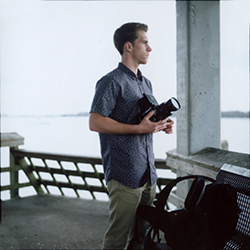 Daniel Seth Kraus
Daniel Seth Kraus
Daniel Seth Kraus‘s work blends historical research with photographic practice to deepen our understanding of people and places. Currently his research investigates faith and work in the American South. Kraus’s work has been featured in numerous print and online publications, including Fraction Magazine, SeeSaw Magazine, Oxford American, and Aint Bad Magazine. His photographs have been exhibited in national and international juried exhibitions, including one at the Morris Museum of Art in Augusta, Georgia. He earned a BFA in photography and a BA in history from the University of North Florida in Jacksonville and is pursuing a MFA in photography at the Tyler School of Art at Temple University in Philadelphia, Pennsylvania.
FELLOW IN ART HISTORY
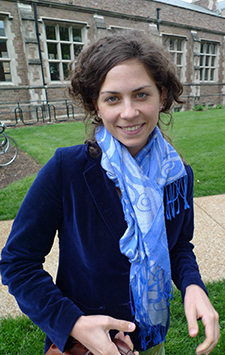 Sara Blaylock
Sara Blaylock
Sara Blaylock will complete her PhD in visual studies at the University of California, Santa Cruz, in spring 2017. To date, the bulk of her research has concerned the experimental film, art, and visual culture of the German Democratic Republic during the 1980s. Her dissertation, “Magnitudes of Dissent: Art from the East German Margins,” focuses on how photography and film, body-based practices, print media, and galleries addressed issues of representation, performativity, and collectivity. It argues that experimental practice in a 1980s GDR was not only an antidote for but also an interpretation of a weakening state—a foil and a mirror to official culture.
Blaylock’s dissertation research has been supported by the German Academic Exchange Service and the Rosa Luxemburg Foundation, as well as by numerous grants from the University of California, Santa Cruz. She has published in numerous academic forums. Most recently, an article appeared in Gradhiva, a French-language journal of art history and anthropology, and Blaylock contributed an essay in both German and English to the catalogue for the exhibition Gegenstimmen. Kunst in der DDR 1976–1989 [Voices of Dissent: Art in the GDR 1976–1989], held at the Martin-Gropius-Bau in Berlin. Another article, “Bringing the War Home to the United States and East Germany: In the Year of the Pig and Pilots in Pajamas,” will appear in Cinema Journal later this year.
Blaylock was recently invited to codirect the International Association for Visual Culture, a scholarly organization that encourages inquiry and debate within the field and that advocates the critical and theoretical expansion of visual-culture studies in academic and artistic venues. She looks forward to helping to advance and strengthen the association’s vision.
HONORABLE MENTIONS IN VISUAL ART AND ART HISTORY
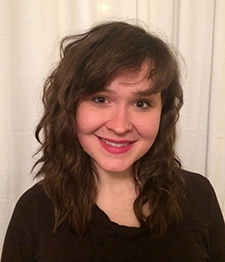 Allison Rose Craver
Allison Rose Craver
Allison Rose Craver will complete her MFA, with a concentration in ceramics, at Ohio State University in in Columbus in May 2017. Craver grew up in East Aurora, New York, and earned a BFA in 2010 from New York State College of Ceramics at Alfred University in Alfred. A year later she studied as a special student at the University of Wisconsin, Madison. Craver has shown her work nationally, including exhibitions at the Archie Bray Foundation for the Ceramic Arts in Helena, Montana, and the Arrowmont School of Arts and Crafts in Gatlinburg, Tennessee. In 2014 she was invited to demonstrate in the Process Room at the annual National Council on Education for the Ceramic Arts conference in Milwaukee. Craver’s work is process driven, using ceramics materials in conjunction with fiber and found objects to explore the nature of care and work.
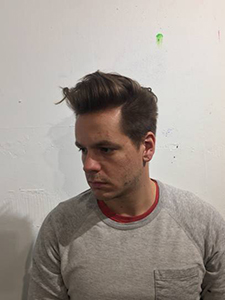 Andrew Jilka
Andrew Jilka
Andrew Jilka was born in in 1986 to a working-class home in Salina, Kansas. The son of a bus driver and a lunch lady, Jilka has been employed as a fast-food worker, a cigarette warehouse stocker, a furniture deliveryman, a Hewlett-Packard call-center representative, a bartender, and later an assistant to the artist Tom Sachs. After selling his Camaro, he enrolled at the University of Kansas in Lawrence, where he received a BFA in printmaking in 2009, as well as a scholarship to study printmaking at Hongik University in Seoul, Korea. Jilka’s work is greatly influenced by the instabilities and anxieties of his Midwestern upbringing. His painting is an attempt to reconcile the “high” of the history and lineage of contemporary painting with the Walmart culture he was raised in. Jilka approaches painting with both the deference of Brahms and the irreverence of the Ramones—and perhaps a touch of Taylor Swift. His work has been shown in group and solo exhibitions in Kansas City, Atlanta, New York, and Seoul. He is currently an MFA candidate at the School of Visual Arts in New York.
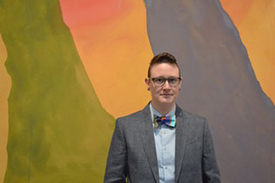 Lex Lancaster
Lex Lancaster
Lex Morgan Lancaster is a PhD candidate in the Department of Art History at the University of Wisconsin, Madison, where they will complete their degree in May 2017. Lancaster’s dissertation, “Dragging Away: Queer Abstraction in Contemporary Art,” investigates abstraction as a tactic of queering in the work of contemporary artists who deploy nonrepresentational form for political ends. Their related article, “Feeling the Grid: Lorna Simpson’s Concrete Abstraction,” was published in ASAP/Journal (2017), and “The Wipe: Sadie Benning’s Queer Abstraction” is forthcoming in Discourse: Journal for Theoretical Studies in Media and Culture. Lancaster is chairing the session on “New Materialisms in Contemporary Art” at CAA’s 2017 Annual Conference in New York.
Lancaster received their BA in art history from Case Western Reserve University in Cleveland, Ohio. They have assisted with exhibitions and public programs at the Cleveland Museum of Art as coordinator of teen programs and intern to the curator of contemporary art, and at the National Gallery of Art in Washington, DC, as a paid summer intern in the Department of Photographs. At the University of Wisconsin, Madison, Lancaster curated the exhibition Our House! Unsettling the Domestic, Queering the Spaces of Home at the Chazen Museum of Art.
myCAA Post-it Wall
posted by CAA — January 20, 2017
The myCAA Post-it Wall, located near registration on the Hilton’s second floor, is where attendees can post their notes, scribbles, messages, heartfelt missives, and anything else they feel like sharing on a myCAA Post-it. The myCAA Post-it pads will be easy to find and pick up around the conference. Get yours at CAA’s booth in the Book and Trade Fair, in the registration booth, or at the hospitality booth.
New in caa.reviews
posted by admin — January 20, 2017
Amanda Cachia visits Electronic Superhighway (2016–1966) at Whitechapel Gallery in London. The “ambitious exhibition” covers “fifty years of digital culture” and considers “how the world’s ceaseless flow of electronic information and unrelenting proliferation of images have come to impact contemporary art.” Read the full review at caa.reviews.
Lauran Whitworth reviews Art AIDS America, organized by the Tacoma Museum of Art and the Bronx Museum of the Arts. Aiming “to be the most comprehensive exploration of the impact of AIDS on the course of American art,” the “powerful” show is “haunted by loss and erasure but simultaneously teeming with verve and resistance.” Read the full review at caa.reviews.
Elizabeth M. Molacek discusses the Power and Pathos: Bronze Sculpture of the Hellenistic World exhibition, curated by Jens Daehner and Kenneth Lapatin of the Getty Villa. “A feast for the eyes,” the exhibition provided “an unprecedented opportunity” to see nearly fifty objects and “succeeded in demonstrating the significance of bronze and defining the trajectory of monumental sculpture in the Hellenistic period.” Read the full review at caa.reviews.
Anna Blume reads Images Take Flight: Feather Art in Mexico and Europe, 1400–1700, edited by Alessandra Russo, Gerhard Wolf, and Diana Fane. The “scholarly and magnificent book” features thirty-three essays “that reveal how feathers, birds, and images of flight became defining signifiers within art, thinking, and history during the geographical expansion of Europe into the Americas.” Read the full review at caa.reviews.
Hospitality Booth
posted by CAA — January 19, 2017
At the New York conference you will find a hospitality booth, where CAA staff and conference help will be stationed to answer questions about sessions and the Book and Trade Fair, or for directions to the restrooms, the lactation room, or the quiet room. Located on the second floor of the Hilton near the registration area, the hospitality booth is intended to make CAA members feel welcome at the conference. The CAA team will also be filming interviews with members at the hospitality booth.


